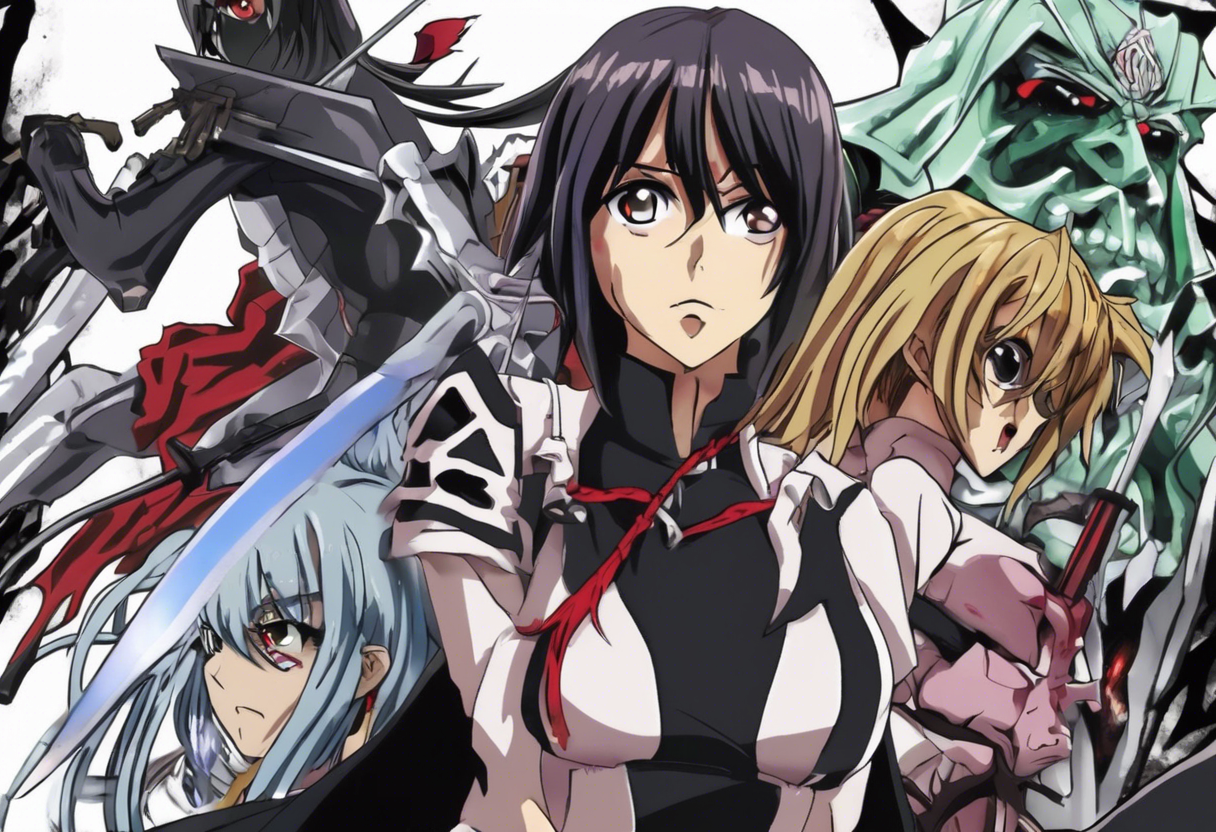Contents
Introduction
Akame ga Kill Episode 2, titled "Kill the Authority," is a pivotal installment in the anime series that delves into the darker aspects of a world plagued by corruption and violence. Produced by White Fox, the episode was directed by Tomoki Kobayashi, written by Makoto Uezu, and produced by Square Enix, which is also the publisher of the original manga by Takahiro and Tetsuya Tashiro. First airing on July 13, 2014, this episode marks a significant shift in the narrative, introducing key characters and themes that define the series.
What sets "Kill the Authority" apart within its genre is its unflinching portrayal of violence and the moral ambiguities of its characters. Unlike many anime series that often shy away from depicting the harsh realities of conflict, Akame ga Kill embraces these elements, creating a narrative that is both intense and thought-provoking.
Plot Summary
Following the events of the first episode, Tatsumi finds himself in the midst of a brutal world after witnessing the horrors committed by a family in the capital who used unsuspecting travelers as torture victims. Night Raid, a group of assassins affiliated with the Revolutionary Army, intervenes and kills the family, with Tatsumi himself killing the daughter in a fit of rage over the death of his friends Sayo and Ieyasu.
Tatsumi is then taken to Night Raid’s secret hideout by Leone, where he is introduced to the rest of the members. This includes Bulat, a strong and openly gay knight with a distinctive haircut; Sheele, a calm and calculated assassin; Mine, a tsundere with a complex personality; and Lubbock, known for his peeping tom tendencies[1][5].
The episode delves into the background of Night Raid, an arm of the Revolutionary Army that is dedicated to combating the corruption in the capital. Led by Najenda, an eyepatch-wearing woman with a mechanical arm, Night Raid’s mission is to gather information and assassinate targets silently. Their ultimate goal is to kill the Prime Minister, who embodies the corruption they seek to eradicate.
Akame, one of the main characters and a skilled assassin, is tasked with training Tatsumi. This training involves menial tasks that, unbeknownst to Tatsumi, are part of his preparation for the harsh realities of being an assassin. Through these tasks, Tatsumi begins to understand the true nature of Night Raid’s work and the moral complexities involved in their actions[2][5].
As Tatsumi decides to join Night Raid, he is drawn into a world where the lines between justice and murder are blurred. The episode highlights the eccentric and often dark pasts of the Night Raid members, each with their own unique role in the organization. Despite the shallow focus on some characters, the episode manages to show that each member has a significant contribution to the group’s mission.
The narrative also touches on Tatsumi’s naivety as he blindly follows Night Raid in the hope of creating a noble future. This naivety is contrasted with the more mature acknowledgment by the show that Night Raid’s actions, though motivated by a desire for justice, are nonetheless acts of murder. This grey area is a recurring theme throughout the series, adding depth to the storytelling and making it more relatable and thought-provoking[4][5].
Themes and Symbolism
One of the central themes in "Kill the Authority" is the exploration of moral ambiguity. The episode does not shy away from depicting the harsh realities of violence and the consequences of taking lives, even in the name of justice. This is symbolized through the characters of Night Raid, who are portrayed not as traditional heroes but as assassins who commit murder as part of their mission.
The character of Akame, with her cold and detached demeanor, serves as a symbol of the emotional toll of such actions. Her training of Tatsumi and the way she handles her missions reflect the desensitization that comes with repeated exposure to violence. This theme is further emphasized by the mechanical arm of Najenda, which symbolizes the physical and emotional scars that result from a life of combat[4][5].
Another significant theme is the concept of corruption and the need for revolution. The capital, depicted as a place of rampant corruption and injustice, serves as a backdrop for the Revolutionary Army’s actions. Night Raid’s mission to gather information and assassinate key targets is a symbol of the resistance against oppressive regimes, highlighting the struggle between those in power and those seeking to overthrow them.
Cultural Impact
Upon its release, "Kill the Authority" contributed to the growing popularity of Akame ga Kill as a series known for its intense action and moral complexity. The episode’s reception was marked by discussions about its graphic violence and the ethical questions it raised, making it a topic of interest in anime communities.
The series, including this episode, has influenced other anime and manga works by setting a precedent for more mature and complex storytelling. Its impact can be seen in subsequent series that also explore themes of moral ambiguity and the consequences of violence.
Critical Reception
Critics and audiences alike praised "Kill the Authority" for its bold approach to storytelling and its unflinching portrayal of violence. However, some critics noted the episode’s shallow focus on certain characters and the naivety of Tatsumi’s character development[4][5].
The episode also sparked controversy due to its graphic content, with some viewers feeling that the show took too much joy in its gratuitous violence. Despite this, the episode was generally well-received for its ability to engage audiences in a more mature and thought-provoking narrative.
Legacy
"Kill the Authority" remains a significant episode in the Akame ga Kill series, contributing to its enduring relevance in the world of anime. The episode’s exploration of moral ambiguity and its portrayal of complex characters continue to inspire filmmakers and artists.
The series as a whole has left a mark on cinematic history, particularly in the action and drama genres, by pushing the boundaries of what is acceptable in terms of violence and moral complexity. It continues to be a point of reference for creators looking to craft narratives that are both intense and thought-provoking.
References
- https://akamegakill.fandom.com/wiki/Episode_2
- https://www.imdb.com/title/tt3949720/synopsis
- https://www.renegadepopculture.com/home/fresh-takes-akame-ga-kill-episode-2-kill-the-authority
- https://animeopinion.wordpress.com/2014/07/13/akame-ga-kill-episode-2-review/
- https://triptychalessandro.wordpress.com/2014/07/23/akame-ga-kill-episode-2-review-kill-the-authority/







